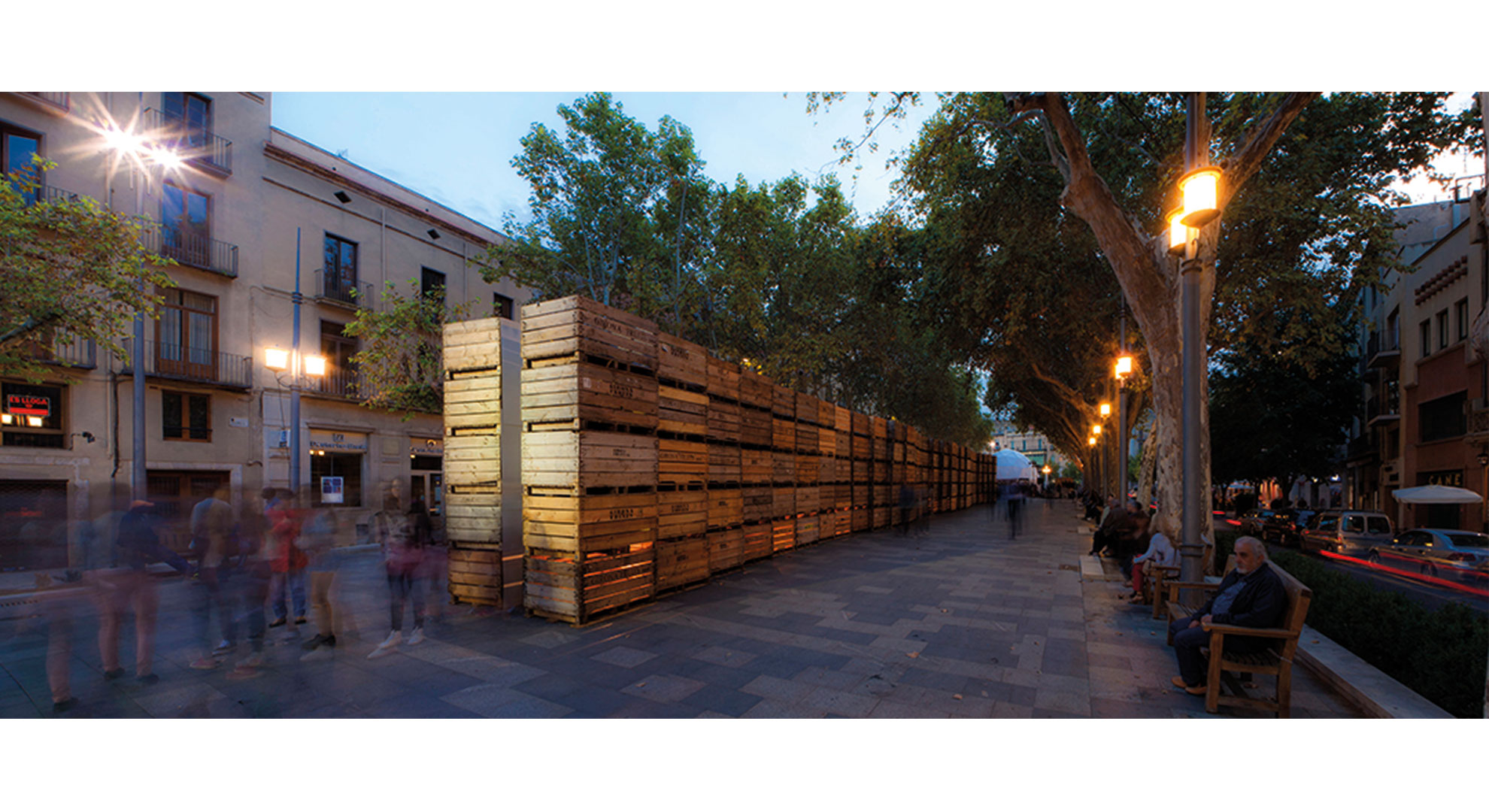Moments
Five reflections on transitory art and architecture
“We hear only those questions for which we are in a position to find answers.” Friedrich Nietszche
Architecture has constructed the physical map of our society in order to develop its social activity. It has built our environment, our cities and has even generated the mind map that draws our landscapes. This architecture has always had the urge to last, and by addition and reiteration has built our world, conceiving our heritage. How can we act in this culture that has already so much built space?
Can constructions or installations that lack that eagerness to last be called architecture? Where is the boundary between architecture and ephemeral architecture? How does this architecture fit in any space? The so-called ephemeral architecture is capable of being transitory by definition: it varies between two consecutive stationary regimes for a short period of time. It is possibly a non-standardized formula, halfway between architecture, art, performance and experimentation. A very powerful formula nowadays that I would prefer to define as transitory art and architecture, with five distinctive features.
Heritage
Both allow us to interact with this heritage without having the need to physically or permanently modify it, while modifying the understanding we have of it. The experience of transitory art and architecture tells us a story that will totally change our perception of the space that has been intervened.
They can generate an urban narrative in a period of time that modifies the psyche of the observer and therefore modifies the psyche of society. Transitory art and architecture modify the heritage narrative and shape culture.

A wind chime with 29 bells hangs right in the middle of the central arch of the old bridge in Manresa. A sound sculpture suspended in midair, at a height of 20 meters, hanging from the beautiful bridge built by Berenguer de Montagut over the Cardaner River in the 16th century. These metallic tubes create a perfect circle with shiny colors that change with light variations and generate a luminous reflection on the water. The tectonic circle moves with the wind and contrasts with the century-long immobility of the bridge. The installation will only remain in our memory.
Reflection
The second feature is the capacity to invite us to reflect on our own convictions and do so in public space. An open question to society in the collective space.

Habitare or the home without a house is an installation that highlights the unattached capacity of architecture to create homes and suggests a home without the boundaries architecture can offer. The home is the addition of the formal humanization brought by the mere fact of living, the aggregation of objects and furniture that await the people who inhabit it. The installation wishes to ask if it is possible to understand a home without a house.
Proxemics
Transitory art and architecture can be a proxemic test. Let me explain: proxemics is the part of semiotics devoted to the study of spatial organization. Edward T. Hall, the American cultural anthropologist, defined proxemics as the interrelated observations and theories of the use of space as a specialized development of culture. The ease of implementation, both economically and in terms of resources, allows us to experiment different solutions, even with a methodological formula, as if it were a laboratory. They are simply an anthropological experiment, a generator of questions in the public space.

“PROXEMIC CRACK,” FIGUERAS, 2015, XEVI BAYONA. PHOTO © XEVI BAYONA
In the center of the Figueras Ramblas, a large crack more than 150 meters long and four meters high restricts space. Only two entrances allow spectators to enter the narrow passage less than 80 centimeters wide and, in turn, to cross paths with strangers, in other spatial conditions of public space, in a proxemic crack.
Landscape
They can also generate a landscape. If we understand the landscape as part of a territory than can be admired for its artistic qualities, we could consider that if a territory lacked that intrinsic artistic quality, it could acquire it temporarily. Transitory art and architecture can, therefore, generate a new landscape.
Right in the middle of the crater of a volcano, Crater is installed for a few hours and generates an atmosphere of light, sound and smoke that refers to the telluric formation of that same landscape. A large-scale installation that allows spectators to enter the depth of the volcano.
Emotion
The fifth distinctive feature is that, as art, we can work with emotions from the subconscious. Art is the manifestation of human activity through which the real is interpreted or the imagined is captured with plastic, linguistic or sound resources. The great contribution of art is precisely its capacity to convey emotions, and therefore opens this field to transitory architecture and art.

“TRIBUTE TO FRAGILITY,” MANRESA, 2020, XEVI BAYONA. PHOTO © XEVI BAYONA
Tribute to Fragility is an installation with over 600 plates wobbling over bars connected to the walkway crossed by the spectator. After crossing it with caution and inadvertently breaking one plate, we are inevitably connected to guilt, emotions and our subconscious.
Transitory art and architecture play a relevant role in our society; they provide imaginative responses that can intervene in our heritage, reinterpreting and rethinking it. They can move us and generate new landscapes. They are an exercise of existential modesty, where it becomes evident that nothing lasts forever, but it is important that everything has, in due time, a beautiful meaning in a world as changing as ours.
Transitory architecture and art can let us hear the answers to be able to make the relevant questions.
MAIN IMAGE: “Crater,” Olot, 2015, Xevi Bayona. Photo © Pep Sau
